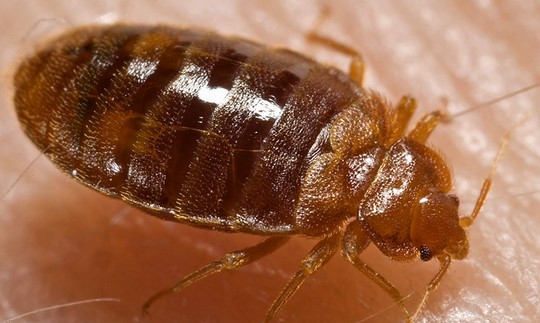 Cimicidae, commonly known as bed bugs, are small, wingless insects that feed on the blood of humans and other warm-blooded animals. They are found in many parts of the world and can be a nuisance in homes, hotels, and other places where people sleep. Bed bugs are difficult to control and can cause a variety of health problems, including skin irritation, allergic reactions, and psychological distress. This article provides an overview of bed bugs and their control, including information on identification, prevention, and treatment.
Cimicidae, commonly known as bed bugs, are small, wingless insects that feed on the blood of humans and other warm-blooded animals. They are found in many parts of the world and can be a nuisance in homes, hotels, and other places where people sleep. Bed bugs are difficult to control and can cause a variety of health problems, including skin irritation, allergic reactions, and psychological distress. This article provides an overview of bed bugs and their control, including information on identification, prevention, and treatment.
Bed Bugs: A Comprehensive Guide to Identification and Control
Welcome to the world of bed bugs! This comprehensive guide will provide you with all the information you need to identify and control these pesky pests.
Bed bugs are small, oval-shaped insects that feed on the blood of humans and animals. They are reddish-brown in color and can range in size from 1mm to 7mm. Bed bugs are nocturnal, meaning they are most active at night. They hide in cracks and crevices during the day and come out to feed on their hosts while they sleep.
Bed bugs can be difficult to identify because they are so small and can easily hide in furniture, bedding, and other items. To identify a bed bug infestation, look for signs of the bugs themselves, such as shed skins, eggs, and fecal spots. You may also notice small, red bites on your skin, which are a sign that you have been bitten by a bed bug.
Once you have identified a bed bug infestation, it is important to take steps to control it. The first step is to thoroughly clean and vacuum the affected area. This will help to remove any eggs or bugs that may be present. You should also use a pesticide to kill any remaining bugs. Be sure to follow the instructions on the label carefully.
Finally, it is important to take steps to prevent future infestations. This includes regularly inspecting your home for signs of bed bugs, washing bedding and clothing in hot water, and sealing any cracks or crevices where the bugs may be hiding.
We hope this guide has been helpful in providing you with the information you need to identify and control bed bugs. With the right knowledge and prevention measures, you can keep your home free of these pesky pests.
Understanding the Biology and Behavior of Cimicidae: What You Need to Know to Effectively Combat Bed Bugs
Bed bugs (Cimicidae) are a growing problem in many parts of the world. They are small, wingless insects that feed on the blood of humans and other warm-blooded animals. While they are not known to transmit any diseases, their bites can cause skin irritation and allergic reactions. In addition, their presence can cause psychological distress and disruption to daily life.
In order to effectively combat bed bugs, it is important to understand their biology and behavior. Bed bugs are nocturnal, meaning they are most active at night. They hide in cracks and crevices during the day, and come out to feed on their hosts at night. They can survive for up to a year without food, and can travel up to 20 feet in a single night.
Bed bugs are attracted to warmth and the carbon dioxide that humans and other animals exhale. They are also attracted to certain odors, such as sweat and body odor. They can detect these odors from up to 20 feet away.
Bed bugs can reproduce quickly, laying up to five eggs per day. The eggs hatch in about a week, and the nymphs (immature bed bugs) reach adulthood in about five weeks. They can live for up to a year, and a single female can lay up to 500 eggs in her lifetime.
In order to effectively combat bed bugs, it is important to understand their biology and behavior. The first step is to identify the infestation. Bed bugs can be difficult to spot, as they are small and often hide in cracks and crevices. However, they can leave behind telltale signs such as shed skins, eggs, and fecal spots.
Once an infestation is identified, it is important to take steps to eliminate the bed bugs. This can include vacuuming, steam cleaning, and using insecticides. It is also important to take steps to prevent future infestations, such as sealing cracks and crevices, and regularly inspecting for signs of bed bugs.
By understanding the biology and behavior of bed bugs, you can take the necessary steps to effectively combat them. With the right knowledge and tools, you can protect yourself and your home from these pesky pests.In conclusion, Cimicidae is a family of insects that includes bed bugs and their control. Bed bugs are a nuisance pest that can cause a variety of health problems, including skin irritation, allergic reactions, and psychological distress. Bed bug control requires a combination of chemical and non-chemical methods, such as vacuuming, steam cleaning, and the use of insecticides. It is important to identify the source of the infestation and to use the appropriate control methods to ensure effective and long-term control.